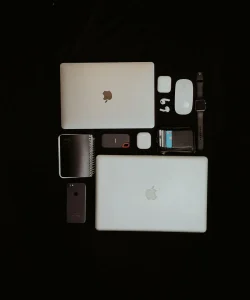Discover the Soul of Beautiful Islamic images
There’s a certain feeling you get when you stand before a piece of truly profound art. It’s a hush, a quiet moment of connection that goes beyond just seeing colors and shapes. I remember the first time I saw a grand piece of Iznik tilework; the sheer complexity and harmony of it just stopped me in my tracks. That’s the power of Beautiful Islamic images. It’s not just decoration. It is a visual language of spirituality, a dialogue between the artist, the viewer, and the divine. This art form, stretching across continents and centuries, offers a window into a world of intricate meaning, profound philosophy, and breathtaking aesthetic accomplishment. It’s an invitation to pause and reflect on concepts of infinity, unity, and the transcendent beauty that can be found in order and pattern.
The Allure of Beautiful Islamic Images: An Introduction
What is it that captivates us so deeply? It’s more than just pretty patterns. The allure stems from a unique artistic philosophy deeply rooted in Islamic theology. Unlike many other artistic traditions, it often shies away from direct figurative representation of living beings, especially in religious contexts. Instead, it channels its creative energy into three main areas: the flowing grace of calligraphy, the mesmerizing logic of geometric patterns, and the stylized, flowing forms of vegetal patterns known as arabesques. This focus creates an art that is contemplative rather than narrative. It doesn’t tell you a story about a person; it encourages you to contemplate the underlying order of the universe and the nature of creation itself. It’s an intellectual and spiritual exercise, all wrapped in a visually stunning package. The best art does that. It makes you think and feel.
Unveiling the Elements of Islamic Aesthetic Beauty
The core elements of Islamic aesthetic beauty are a testament to the idea of unity in diversity, or Tawhid. Calligraphy transforms the written word into a holy art. Geometry takes simple shapes—circles, squares, stars—and repeats them into infinitely complex patterns, suggesting the infinite nature of the creator. Arabesques use scrolling vines and leaves to represent the endlessness and abundance of creation. Often, all three elements are woven together in a single piece, whether it’s a mosque wall, a ceramic plate, or a handwritten Qur’an. This interplay creates a multi-layered experience. You can appreciate the overall harmony from a distance, then move closer to lose yourself in the mind-bending detail of a single geometric star or the elegant stroke of a calligrapher’s reed pen.
The Art of Islamic Calligraphy: Script as Sacred Art
In Islamic culture, the Arabic script is not merely a tool for communication; it’s the vessel for the divine word of the Qur’an. Because of this, calligraphy is considered the highest and most revered art form. Seriously. Learning how to appreciate islamic calligraphy art is to understand that each stroke is an act of devotion. Different scripts were developed over centuries, each with its own character and rules. The angular, majestic Kufic script, often seen in early Qur’ans and architectural friezes, feels ancient and monumental. In contrast, scripts like Naskh or Thuluth are fluid and elegant, their cursive forms dancing across the page. A master calligrapher spends a lifetime perfecting their craft, learning not just the shape of the letters but the rhythm, balance, and spiritual energy they contain. These are truly Beautiful Islamic images created from words.
Intricate Geometric Patterns and Their Deep Meanings
Walk into any historic mosque from Spain to Iran, and you will inevitably be surrounded by a dizzying array of geometric patterns. These aren’t just random decorations. The meaning behind islamic geometric patterns is profound, reflecting the order and unity of the universe. Based on repeating grids of circles and lines, these patterns can be extended infinitely in any direction, symbolizing the infinite nature of Allah. They are a visual representation of harmony and underlying mathematical principles that govern creation. I once spent an hour just staring at a ceiling in the Alhambra, trying to trace a single line through its labyrinthine design. It’s a meditative experience. The complexity born from simple rules is a lesson in itself, a reminder that the most magnificent structures are built from the simplest, most perfect foundations.
Nature’s Embrace: Flora and Fauna in Islamic Imagery
While geometry speaks of a logical, abstract order, the use of floral and vegetal motifs—the arabesque—speaks of the vibrant, living pulse of creation. These stylized, endlessly repeating patterns of vines, leaves, and flowers are not meant to be a direct copy of nature. Instead, they are an idealized, rhythmic representation of it. They evoke the idea of paradise, often described as a lush garden. The patterns intertwine and spread across surfaces, creating a sense of organic growth and vitality that balances the rigid structure of geometry. It’s a perfect fusion of two worlds. You can see this same love for the natural world in other artistic traditions, where artists create captivating beautiful scenery images that celebrate creation. The impulse is universal, even if the expression is unique. The depiction of nature in these works adds a lush layer to Beautiful Islamic images.
A Journey Through History: Evolution of Islamic Visuals
The history of Islamic art is not a single, straight line. It’s a vast and sprawling story with countless regional variations and influences. It began in the seventh century, drawing upon the rich artistic traditions of the lands it encompassed, primarily the Byzantine and Sassanian (Persian) empires. From these roots, a distinctly new visual language began to emerge, one that prioritized abstraction, pattern, and calligraphy. As the Islamic world expanded, so did its artistic vocabulary, absorbing and reinterpreting elements from Central Asia, India, and North Africa. It’s a dynamic, evolving tradition, not a static relic of the past.
Early Islamic Art: Foundations and Influences
The early period was formative. The Umayyad Caliphate, for instance, saw the construction of masterpieces like the Dome of the Rock in Jerusalem, which features stunning mosaics clearly influenced by Byzantine traditions but repurposed with Qur’anic inscriptions and non-figural imagery. This was the crucible where the core identity was forged. The emphasis was on creating a unique visual culture that reflected the new faith, moving away from the figurative religious art of its predecessors and toward something new, something that would become instantly recognizable as Islamic.
Regional Diversity: Styles from Across the Islamic World
You can’t talk about Islamic art as one single thing. It’s impossible. The delicate, intricate tilework (zellij) of Morocco is worlds away from the bold, monumental brickwork of Timurid Central Asia. Persian miniature paintings, with their jewel-like colors and detailed narratives, offer a stark contrast to the abstract geometric purity of Mamluk woodwork from Egypt. The Mughals in India blended Persian sensibilities with local traditions to create wonders like the Taj Mahal, while the Ottomans in Turkey perfected the grand, light-filled mosque dome. Each region tells its own story, contributing a unique dialect to the universal language of Islamic art.
The Mosque as a Canvas: Sacred Architecture and Art
The mosque is where all the elements of Islamic art converge into a single, immersive experience. It is the ultimate canvas. The architecture itself—with its courtyards, domes, and minarets—creates a sense of both communal space and divine transcendence. The walls are adorned with calligraphy featuring verses from the Qur’an, reminding the faithful of their purpose. The mihrab, the niche indicating the direction of prayer, is often the most ornate area, a focal point of incredible artistic effort. Light filters through carved screens (mashrabiya), casting shifting geometric shadows. It’s an environment designed to quiet the mind and open the heart to prayer, a masterpiece of functional, spiritual design that produces some of the most enduring Beautiful Islamic images.
Symbolism and Spirituality: Decoding Islamic Artistic Themes
Everything has a purpose. Understanding the spiritual meaning of islamic art symbols is key to a deeper appreciation. The circle, with no beginning and no end, is a perfect symbol for God. The star, radiating from a central point, represents the spread of Islam. Water, featured in fountains and pools, symbolizes purity and life. Even light itself is a powerful symbol, representing divine revelation. The art is not meant to be “read” literally but to be experienced. It’s a form of visual dhikr (remembrance), where the repetition of patterns helps the viewer contemplate the infinite and the unified nature of reality. This is precisely what makes islamic artwork beautiful; it’s the depth beneath the surface.
Portraying Paradise: Visions of the Divine
How do you picture the un-picturable? The concept of Jannah, or paradise, is often visualized as a serene, lush garden, filled with flowing water, abundant fruit, and fragrant flowers. This imagery is woven throughout Islamic art. The floral motifs on prayer rugs, the garden-like layouts of palace courtyards, and the vibrant blues and greens of ceramic tiles all evoke this heavenly ideal. It’s a promise of peace and eternal bliss, a reminder of the ultimate reward, brought to life through art.
Symbolic Animals and Plants in Islamic Art
Although large-scale figurative representation is rare in religious art, certain animals and plants do appear, especially in secular contexts like palaces and manuscripts, carrying symbolic weight. The peacock can symbolize beauty and paradise, the lion represents power and royalty, and the cypress tree signifies eternity. These motifs, often highly stylized, add another layer of meaning and storytelling to the visual tapestry of the art form.
The Human Figure: Representation and Interpretation
Let’s clear something up. The idea that Islamic art completely forbids the human figure is a misconception. While it is true that figurative representation is avoided in sacred contexts like the mosque to prevent idolatry, it flourished in secular arts. Persian, Mughal, and Ottoman illustrated manuscripts are filled with vivid depictions of historical events, epic poems, and courtly life. The approach, however, was often stylized and two-dimensional, focusing on narrative and pattern rather than realistic portraiture. This is one of the most misunderstood aspects of the collection of Beautiful Islamic images available.
Discovering and Engaging with Exquisite Islamic Art
So, where do you find this art? How do you experience it? In our digital age, it’s easier than ever. But nothing beats the real thing. It’s about making a conscious effort to look, whether on a screen or in a gallery. The journey of discovery is part of the joy.
Exploring Online Archives and Digital Galleries
The internet is a treasure trove. Museum websites from the Met to the V&A have vast online collections you can browse for hours. Digital archives and platforms dedicated to Islamic art offer high-resolution galleries that let you zoom in and appreciate the mind-boggling details you might otherwise miss. You can even find helpful resources like beautiful scenery photography tips that can train your eye to better appreciate the composition and detail in these masterworks, even on a screen.
Experiencing Islamic Art in Museums and Exhibitions
I cannot stress this enough: see it in person if you can. Standing in front of a monumental Mamluk minbar or a room paneled with Damascene woodwork is an experience no photograph can replicate. The scale, the texture, the way the light hits the iridescent lusterware—it’s a full sensory experience. Many major world museums have dedicated Islamic art wings that are well worth a pilgrimage. These spaces protect and showcase these stunning Beautiful Islamic images for all to learn from.
Incorporating Islamic Aesthetics into Modern Living
The principles of this art are timeless. You don’t have to live in a palace to incorporate its beauty into your life. A single, well-chosen calligraphic print, a throw pillow with a geometric design, or a beautifully crafted wooden box can bring a touch of that harmony and contemplative beauty into your home. It’s about appreciating the balance, color, and spiritual depth that these designs offer. It’s a way to live with art that is more than just decorative.
The Enduring Impact and Inspiration of Islamic Imagery
The influence of Islamic art is far-reaching. The mathematical genius of its geometric patterns fascinated artists like M.C. Escher. The emphasis on pattern and decoration was a key influence on the Arts and Crafts movement in Britain. Today, contemporary designers, architects, and artists continue to draw inspiration from this rich visual heritage. These are not just artifacts; they are a living source of creative ideas and Beautiful Islamic images.
Bridging Cultures Through Visual Narratives
In a world that often feels divided, art is a powerful bridge. It speaks a universal language of beauty, harmony, and humanity. When someone from a different culture can stand in awe of the tilework in the Sheikh Lotfollah Mosque, a connection is made. These visual narratives tell a story of a culture that values learning, spirituality, and the creation of breathtaking beauty. They foster understanding and dismantle stereotypes, one intricate pattern at a time. Sharing these Beautiful Islamic images is sharing a piece of history.
Contemporary Artists Reimagining Islamic Traditions
This tradition is not frozen in time. A new generation of artists, both from the Muslim world and beyond, are taking the classical elements of Islamic art and reinterpreting them in new and exciting ways. They are using calligraphy in graffiti art, creating digital geometric patterns, and using the language of this art to comment on contemporary issues. This constant reinvention ensures that the tradition remains vibrant, relevant, and continues to produce some truly stunning beauty pictures for a new era.
Conclusion: Celebrating the Rich Tapestry of Islamic Visuals
From the first stroke of a reed pen to the final placement of a mosaic tile, the creation of Beautiful Islamic images is an act of faith, a mathematical puzzle, and a celebration of the divine order. It is an art form that asks you to look closer, to think deeper, and to find the infinite in the intricate. It’s a rich tapestry woven over centuries by countless anonymous hands, a gift of beauty and contemplation to the world. Appreciating this art is to appreciate a unique worldview, one that finds harmony not in the representation of the physical world, but in the abstract principles that lie beneath it. The enduring legacy of these Beautiful Islamic images lies in their ability to quiet the noise and connect us to something timeless and profound.







